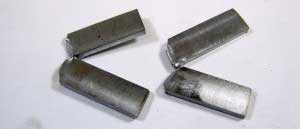There are two types of testing methods which are used for evaluating the impact resistance of any material. One is ‘IZOD impact resistance test’ and another one is ‘Charpy impact resistance test’. Both of them are based on the same principle but still are different in the way the tests are conducted. In this blog section, we will discuss these difference in details and will introduce you to an instrument suitable for both testing methods.
The major differences between both the testing techniques to keep in mind while selecting a test are as follows:
- Specimen Position
The position of the specimen is different in both the testing methods. In the IZOD method, the test material is to be placed in a vertical position, while in the Charpy method, the test material will be placed horizontally.
- Striking Point
The point at which the hammer will strike the specimen is distinct for both of them. In vertical testing, the hammer will strike on the upper tip of the sample while in horizontal testing the hammer will strike at the point of notch but in the opposite direction.
- Notch Direction
The notch direction at which the sample will face is different in both the technique. The notch face in the IZOD test is facing the striker, fastened in a pendulum, while in the Charpy test, the notch face is situated away from the striker.
- Specimen Dimensions
The test sample must have distinct dimensions for each test. The IZOD test specimen is 75 x 10 x 10mm and the basic Charpy test specimen is 55 x 10 x 10mm (the dimension can vary)
One of the renowned testing instrument offering both the techniques in one is IZOD/CHARPY Impact Tester Digital. It is designed to compute the impact resistance of plastics and metal. It works on the principle of pendulum method. The instrument complies with ASTM D256 – 10, ASTM D618 – 13, ASTM D883 – 12, ASTM D1204 – 14, ASTM D1248 – 12, ASTM E691 – 14 standards.
